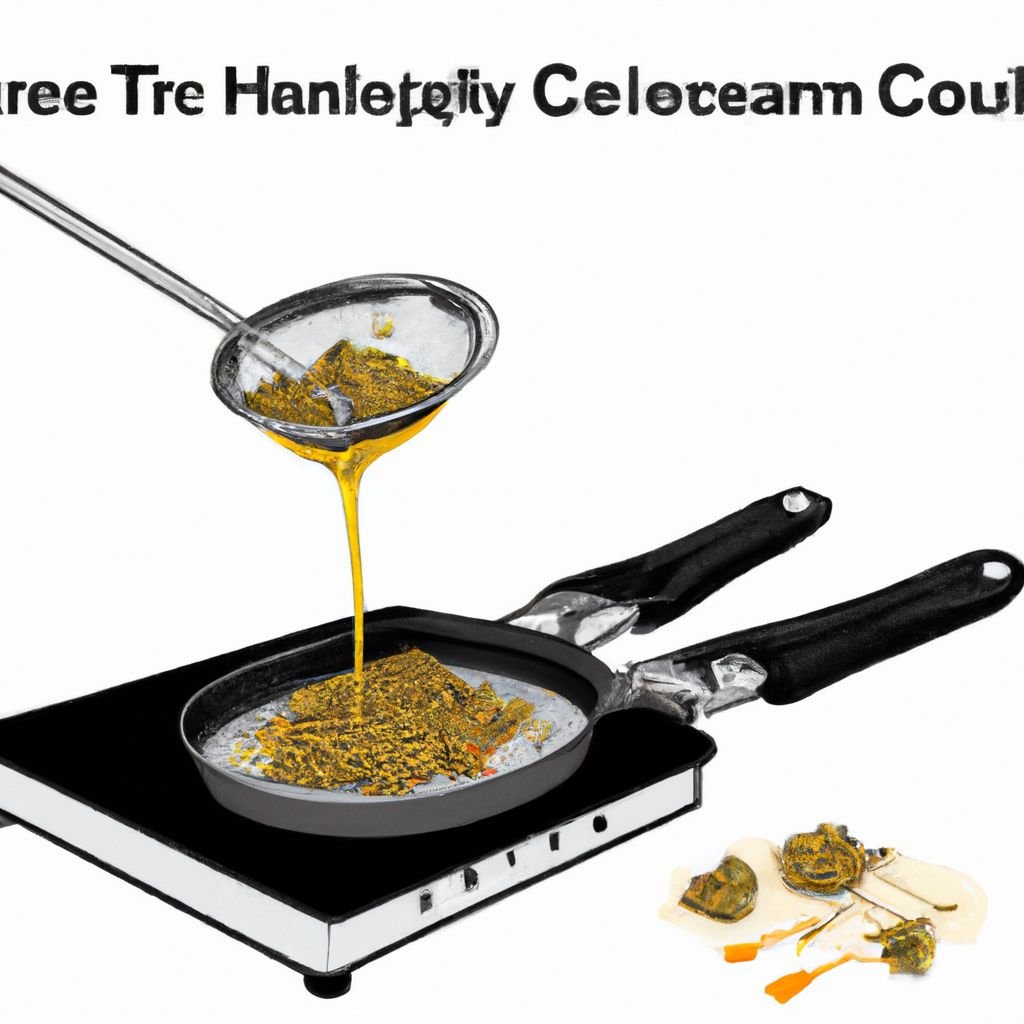THC extraction is a crucial step in creating cannabis-infused baked goods. Whether it’s decarboxylation, infusion techniques, or tincture making, understanding the extraction methods is essential for successful cannabis baking. In this article, we will explore the various THC extraction methods for baking and how to incorporate cannabis into your favorite recipes.
Key Takeaways
- Decarboxylation is the process of activating THC and CBD by heating the cannabis at a specific temperature.
- Infusion techniques such as using butter or oil are essential for incorporating cannabis into baked goods.
- Tincture making involves steeping cannabis in alcohol to create a potent liquid extract.
- Understanding the storage and preservation of cannabis-infused products is crucial for maintaining potency and freshness.
- Baking with cannabis requires careful consideration of dosage and flavor profiles to achieve the desired results.
THC Extraction Methods for Baking
Decarboxylation
Let’s turn up the heat and get those cannabinoids ready to party! Decarboxylation is your golden ticket to unlocking the psychoactive symphony in your cannabis. Think of it as a botanical ‘pre-game’ before the main event in the oven.
- Heat it up: Aim for a cozy 200 – 290\u00b0F (104 – 118\u00b0C).
- Watch the clock: This can take anywhere from 7 – 60 minutes. Patience, young Padawan!
- CO2 says bye-bye: As it waves farewell, it transforms THCA and CBDA into the life of the party, THC and CBD.
Remember, it’s not just about cranking up the heat; it’s a delicate dance of temperature and time. Too hot, too fast, and you’ll scorch your green guests. Too cool, too slow, and they’ll never come out of their shell.
Once you’ve mastered the art of decarboxylation, you’re well on your way to baking bliss. Just don’t forget to invite your newly activated cannabinoid friends to the mix!
Extraction Methods
Alright, let’s get into the nitty-gritty of THC extraction. Supercritical CO2 extraction is the bee’s knees for purists. It’s like giving your cannabis a spa day, with high pressure and chilly temps ensuring a clean and potent concentrate. No nasty residues here, just pure bliss for your baking bonanza.
But hey, if you’re more of a DIY enthusiast, you can go old school with the hot and cold extraction methods. Just imagine: your slow cooker becomes a cauldron of cannabis magic at a cozy 80°C. Or, if you’re cool as a cucumber, try the cold extraction to play it chill.
Remember, patience is a virtue, and precision is your best friend in the alchemy of THC extraction.
Here’s what you’ll need to get started on your kitchen chemistry:
- A trusty coffee grinder or blender
- Cheesecloth for the great sieve-off
- Glass jars for the concoction
- Dropper bottles for your potion storage
Whether you’re infusing glycerine with the essence of decarbed dry bud or charming the cannabinoids with high-proof spirits, the key is in the details. So, don your wizard hat and let’s brew some botanical brilliance!
Infusion Techniques
Alright, let’s get infused! Infusion is like a tea party with your cannabis, except here, the tea is fat and the guests are cannabinoids. You’re going to want to cozy up with some oil or butter because these guys are fat-soluble socialites.
- Decarb your herb: This is the pre-party where THC gets activated.
- Simmer and stir: Low and slow is the motto. Keep it at a whisper of a bubble.
- Strain the goods: Cheesecloth is your friend. Say goodbye to the plant bits, keep the golden goodness.
Remember, patience is a virtue, and good things come to those who wait (and stir occasionally).
Now, don’t just wing it with your grandma’s teapot. Here’s a quick gear checklist:
- Crock pot (slow cooker)
- Coffee grinder/blender
- Cheesecloth
- Glass jar
- Dropper bottles (for that liquid gold storage)
And remember, the potency of your infusion is like a box of chocolates, you never know what you’re gonna get. It all depends on the strain, the fat, and how well you’ve played the infusion game. So start low, go slow, and enjoy the ride!
Tincture Making
Alright, you’ve mastered the tincture technique, now let’s get baked! Baking with cannabis is not just about throwing some green into your brownie mix and hoping for the best. It’s an art, a science, and a surefire way to make your kitchen smell like a dispensary.
- Decarb is key: Before you mix your tincture into the batter, remember that decarboxylation is crucial. No heat, no treat!
- Mix it well: Ensure even distribution of your tincture in the mix to avoid ‘pot’ holes in your edibles.
- Temperature control: Too hot and you’ll vaporize the good stuff. Keep it low and slow.
Remember, when it comes to edibles, patience is not just a virtue, it’s a necessity. The effects can take a while to kick in, so don’t go nibbling on a second brownie too soon unless you’re aiming for orbit.
Lastly, don’t forget to label your baked goods. You wouldn’t want your roommates reaching for a ‘special’ cookie when they’re just craving a snack. Happy baking and may the fork be with you!
Baking with Cannabis
Alright, bakers and shakers, let’s get this pot party started! Baking with cannabis isn’t as simple as sprinkling some magic dust into your cookie dough. It’s a culinary art that requires a dash of knowledge, a pinch of precision, and a heap of creativity.
When you’re playing with pot in the kitchen, remember that patience is not just a virtue, it’s a necessity. The effects of your ganja goodies can take a scenic route of up to two hours to hit, so don’t go nibbling on a second brownie just because the first one’s being a slowpoke.
Pro Tip: Start low and go slow! Your taste buds might be begging for more, but your body will thank you later.
Here’s a quick recipe rundown to get your bake on:
- Cannabis-Infused Butter: Cream of the crop for cookies and cakes.
- Cannabis Flour: A potent powder, use it sparingly or prepare for liftoff.
And remember, the golden rule of cannabis cuisine: always start with a small amount and increase gradually. You want your friends to leave with a smile, not with the room spinning. Happy baking!
Storage and Preservation
Alright, bakers and shakers, let’s wrap this up with a cherry on top! Storing your THC goodies is as crucial as the baking itself. Keep your cannabis confections fresh and potent with these simple tips:
- Cool as a cucumber: Heat is the enemy. Store your treats in a cool, dark place, like a pantry or a fridge.
- Block the sun: UV rays are like kryptonite to cannabinoids. Use amber glass jars to shield your stash.
- Seal the deal: Air-tight containers are your best buds. They keep the moisture out and the magic in.
Remember, the nose knows! If your edibles start smelling funky or change in texture, it’s time to bid them farewell.
And hey, don’t let your four-legged friends get a whiff of this stuff. Keep it out of paws’ reach. Happy baking and even happier storing!
Conclusion
So there you have it, folks! Whether you’re baking, steeping, or extracting, these THC extraction methods are sure to elevate your baking game to a whole new level. From decarboxylation to infusion, we’ve covered it all. Now, go forth and bake with confidence, and remember, the higher the bake, the higher the stakes! Happy baking, and may your treats be as potent as they are delicious!
Frequently Asked Questions
What is decarboxylation and why is it important for THC extraction?
Decarboxylation is the process of activating THC and CBD by heating cannabis to convert THCa and CBDa into their active forms. This step is crucial for making THC-infused products like edibles and tinctures.
What are the different extraction methods for THC?
The different extraction methods for THC include alcohol extraction, oil infusion, and glycerin extraction. Each method has its own advantages and can be used to create various THC-infused products.
How can I infuse cannabis into butter or oil for baking?
To infuse cannabis into butter or oil for baking, you can heat the cannabis with the butter or oil at a specific temperature for a designated amount of time. This allows the cannabinoids to infuse into the fat, which can then be used in baking recipes.
What is the difference between tincture making and other THC extraction methods?
Tincture making involves using alcohol or glycerin to extract THC and CBD from cannabis, resulting in a liquid form that can be used as a sublingual or edible product. This method offers a more concentrated and versatile way to consume THC.
What are the best methods for storing and preserving THC-infused products?
The best methods for storing and preserving THC-infused products include using airtight containers, storing in a cool and dark place, and using amber-colored bottles to protect the products from light and preserve their potency.
What equipment is needed for THC extraction and infusion?
The equipment needed for THC extraction and infusion includes a crock pot, coffee grinder/blender, cheesecloth, glass jars, dropper bottles, and a strainer. These tools are essential for various extraction and infusion techniques.
What are the key steps in the decarboxylation process for THC extraction?
The key steps in the decarboxylation process for THC extraction include grinding the cannabis, spreading it on a baking sheet, and baking it in an oven at a specific temperature for a designated amount of time. This activates the THC and CBD for extraction.
Can THC extraction be done using alternative ingredients and methods?
Yes, THC extraction can be done using alternative ingredients and methods, such as using food-grade glycerin, alternative oils, or cold extraction techniques. These alternative methods offer different extraction processes and end products.


